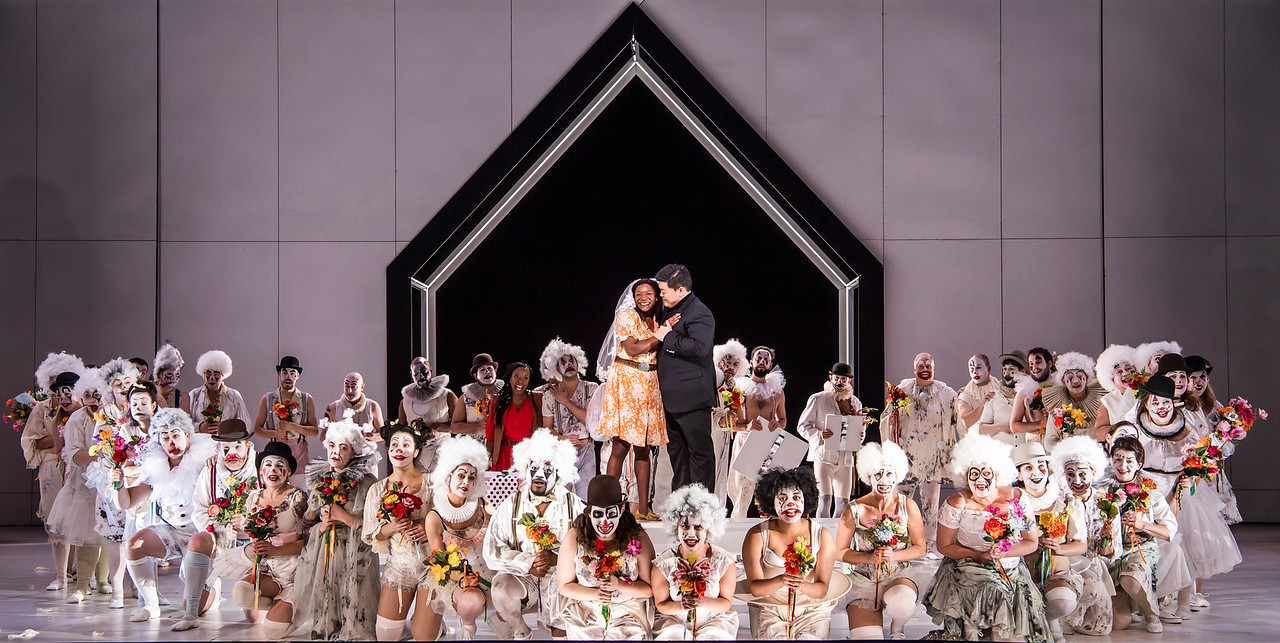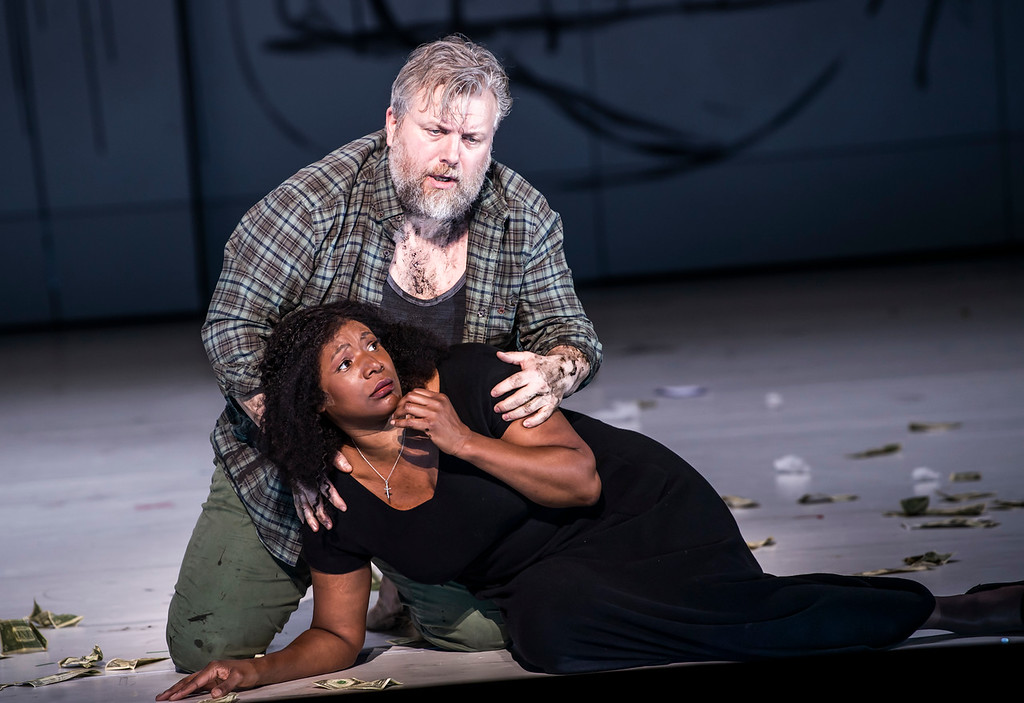London Coliseum, 19 February 2020
Luisa Miller is a genuine rarity, even allowing for Verdi’s large output. It also has a large amount of magnificent music which deserves to be heard more frequently. Any opera company mounting a new production is faced with a dilemma. Do they go for something fairly conventional which at least allows us to get to know the work and might enable more regular revivals, or do they go for a radical reinterpretation which will challenge the listener? In many ways Barbara Harakova’s new production for ENO falls somewhere between the two approaches. It is visually striking and certainly takes its own approach to the narrative, but the characterisation and inter-play on stage do not live up to the extensive notes from the director in the programme. I would have expected far more nuanced relationships rather than the broad brush-strokes we are given. Setting the whole thing in modern dress also confuses any sense of class or social relationships.
The only one who comes out of this with any real individuality is James Creswell’s magnificent Count Walter. A cynical autocrat, convinced he can get away with anything, rides roughshod over all those around him. His sudden collapse at the end of act one when faced with the possible revelation of his hidden past is unconvincing given the arrogance we have already witnessed.
The other really strong characters are both older men. Soloman Howard’s creepy Wurm is the personification of evil without ever becoming a stereotype, and there is genuine empathy in Olafur Sigurdarson’s Miller.
Elizabeth Llewellyn’s Luisa makes a strong case for the part but she seems a fish out of water given all those around her. The voice is fantastic and it would be good to see her in a stronger production. David Junghoon Kim sings Rodolfo well but his acting ability is very limited at present which makes his relationship with Luisa and his father all the more unbelievable. Christine Rice makes a finely focussed Federica though the part is underbalanced against Luisa.
Andrew Libermann’s set looks very good in its simple white state at the start but it soon becomes clear it is to be painted and daubed as the evening progresses. There are also intrusive elements which are never explained – like the vast upside-down hanging crucifix, and the naked young man and the barrel. It is as if the director can’t simply trust the music to tell the story, the stage has to be full of business. This is particularly true of the chorus. I thought we had dropped into The Bartered Bride by mistake at the start, given the clown costumes, but it soon appeared we were to be stuck with this idee fixe. There are also the ever present jokey masked dancers who frequently upstage the emotional depths of the music.
In the pit Alexander Joel creates a fine heart-on-sleeve romantic weight with his orchestra and it is this and the singing which carries the evening through. I’d love to encounter Luisa Miller again but I doubt this production will see the light of day in a future season.


